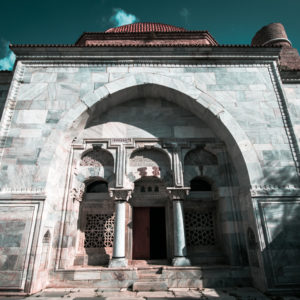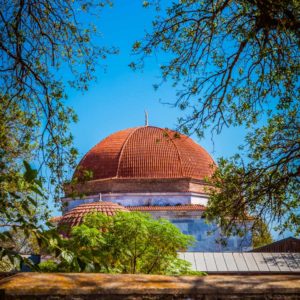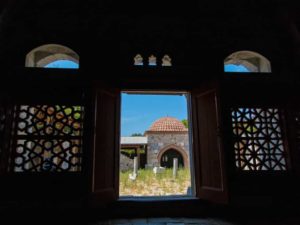Ilyas Bey Mosque was built by Ilyas Bey of Mentesogullari in 1404 which is located in Balat Village next to Miletos in Didim. The mosque was used in the construction of the marble blocks of the ancient city of Miletus which is known as Cuma Mosque. Soke Mutesellimi was built by Ilyaszade Ilyas Aga in 1821 from the zero.

The facades are covered with marble material, the dome pulley is given in two stages, the minaret is reached through the wall and the mihrab arrangement exhibits the characteristics of the Principalities Period. The Ilyas Bey Mosque is a square planned building with a dimension of 18 x 18 meters and a 14-meter dome covered. The body walls are covered with reused marbles; the dome is built with bricks. There is no place for the last congregation. The minaret was destroyed in the earthquake of 1955 which is located in the northwest corner of the building and whose entrance is provided from the sanctuary.

Ilyas Bey Mosque is a building that attracts attention with its rich stone ornaments. In the pediments of all windows on the east, west and south fronts, especially on the crown and mihrab, and on the ceilings of the lower row windows, floral and geometric ornaments with carved and inlaid techniques and writing strips were used. Colored stones and tiles were used in the inlaid techniques.

The mosque is accessed through an iwan-shaped gate in the middle of the northern facade. The iwan is divided into three arched sections with two marble columns; the large section in the middle is arranged as an entrance opening and the two sections on the sides are a window with marble slabs with mesh. The dome passages of the structure are provided with large trumpets. The inside of the trumps is decorated with oyster shells, triangles and muqarnas.
Ilyas Bey Mosque is a building that attracts attention with its rich stone ornaments. In the pediments of all windows on the east, west and south fronts, especially on the crown and mihrab, and on the ceilings of the lower row windows, floral and geometric ornaments with carved and inlaid techniques and writing strips were used. Colored stones and tiles were used in the inlaid techniques.

